How N.C. Melons Go From Farm to Table
Melon growers ensure food safety, refreshing flavor from field to store.
Joanie Stiers |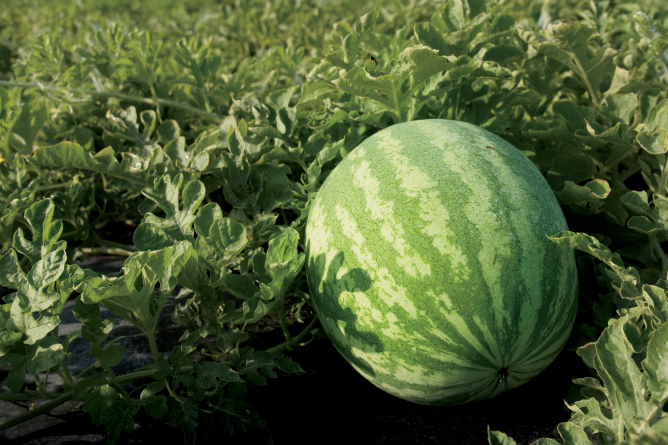
How long do you think it takes a watermelon to get from the farm to your local grocery store? Over the course of just 48 hours, one North Carolina family farm strives to harvest, pack, and ship melons as fresh and clean as they are refreshing to eat.
Jackson Farming Co. in Autryville ships between 2 million and 2.5 million cantaloupe and upward of 40 million pounds of watermelon throughout the Eastern U.S. in an average year. And in addition the efficiency of getting the fruit from farm to table, they also place a strong emphasis on food safety.
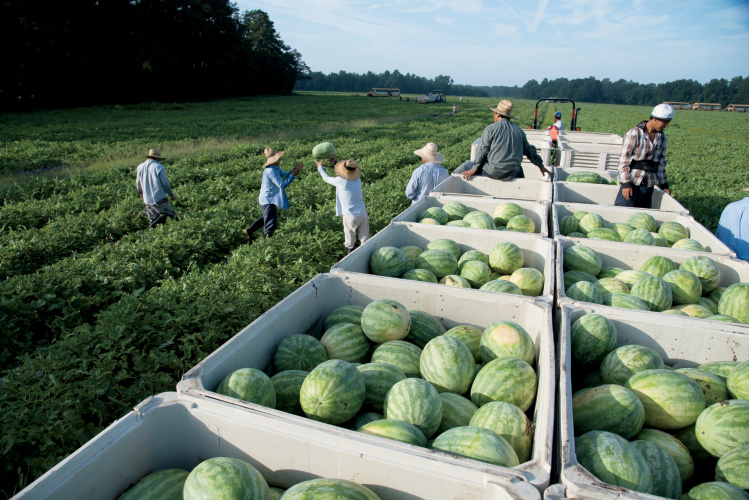
Safe & Sound
The family farm’s millions of melons pass through a disinfecting and cleaning spray wash every harvest season. They test washing lines daily and cooling storage areas weekly for proper sanitation. Even the harvesting equipment receives a sanitizing chlorine wash.
“Ten years ago, we packed it, cooled it and shipped it,” says Rodney Jackson, vice president of the family fruit and vegetable farm, the first in the state to adopt state-of-the-art mechanical grading lines for melons. “Now, we are fully enclosed, climate-controlled with stainless steel machinery and protocols in place to test machinery for food safety. We swab the surfaces and check them to make sure we are clean each day before we start.”
Modern-day melon production on this scale demands expensive food safety certifications and routine audits. They hire employees to handle food safety policies and implement stringent sanitation standards for workers. If a food safety concern arises, the farm controls the ability to trace a melon’s life, from field to store, from the sticker on its rind.
“It’s been an evolving process to provide the customer with a safer product,” says Jackson, whose family has grown melons since 1981.
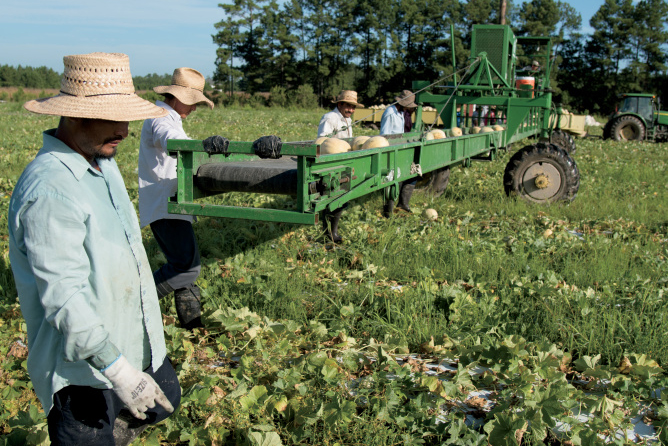
A Melon’s Life
Jackson and his parents, N.C. Sen. Brent and Debbie Jackson, grow, pack, ship, and broker fresh fruits and vegetables year-round from the heart of Sampson County. Watermelons, cantaloupe, honeydew and sprite melon constitute about 60 percent of their specialty crops acreage. They also grow strawberries, broccoli and sweet potatoes.
The family’s melon business reaches a market from the Atlantic Coast to Mississippi and Florida to Pennsylvania. Nearly all of their melons arrive within 48 hours of harvest to distribution centers owned by major retailers, such as Wal-Mart, Kroger, Harris Teeter and Food Lion.
But first, the melon’s life starts from seed sown in the farm’s greenhouse in late winter. Workers proceed to plant seedlings in April into plastic-lined, irrigation-ready beds with the aid of GPS-enabled tractors.
“We lay black plastic with drip irrigation underneath,” Jackson says. “It is the most efficient way to irrigate a crop, and it’s also best for food safety because the water never touches the fruit.”
Every week, employees scout for insects and diseases and take plant tissue samples to test for nutrient deficiencies. They regulate moisture and nutrient needs through the drip irrigation system.
About four weeks into the growing season, the melon vines sprawl 3 to 6 feet and set blooms. Honeybees pollinate them to form the melons, and then harvest begins in mid-June. Workers harvest every melon by hand through early October.
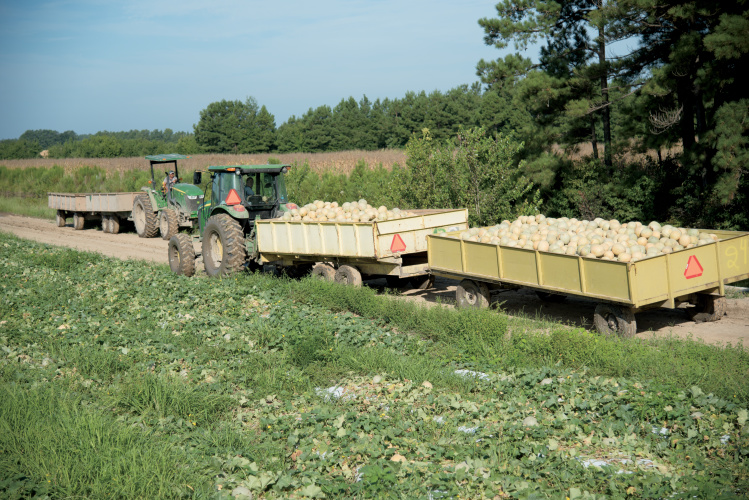
The farm employs up to 125 workers at a time. The family first advertises to hire local residents, but Jackson says they consistently lack response and proceed to hire about 90 migrant workers through the federal H-2A temporary agricultural labor program.
“Ultimately, we as a country have to decide: Do we import our fresh fruit and vegetables, or do we import our labor?” he says. “We can’t have fresh fruits and vegetables without some type of workable guest worker program.”
Many of the farm’s migrant workers come from Mexico. They arrive in March, stay in the farm’s government-approved housing and return home in November. The farm has employed some of these migrant workers for more than 20 years.
“They have become like family, and they know what to do,” Jackson says.
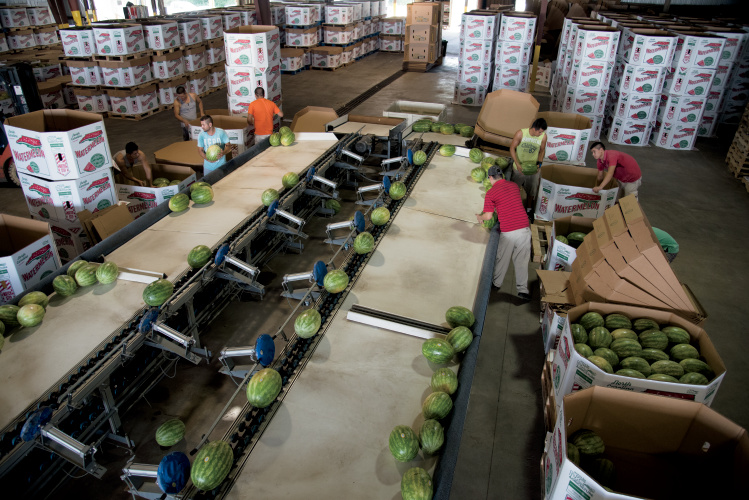
Harvest Know-How
Knowing what to do at harvest directly correlates to the quality of the end product.
“Watermelon is an art,” Jackson says. “You have to look at them to know when they are ripe. We have a specific group that cuts the watermelon and rolls them over. Another group picks them up, tosses and places them in plastic bin boxes.”
Workers use a gentle, rhythmic, assembly-line toss. Jackson says watermelons bruise easily, and workers must handle them properly to avoid damage. In contrast, cantaloupes tolerate the help of machines and prove a bit easier to identify for readiness: They appear either green and immature or golden and ripe. Field workers place picked cantaloupes on a conveyer that extends across the rows in front of them. The conveyer moves the cantaloupes into harvest wagons.
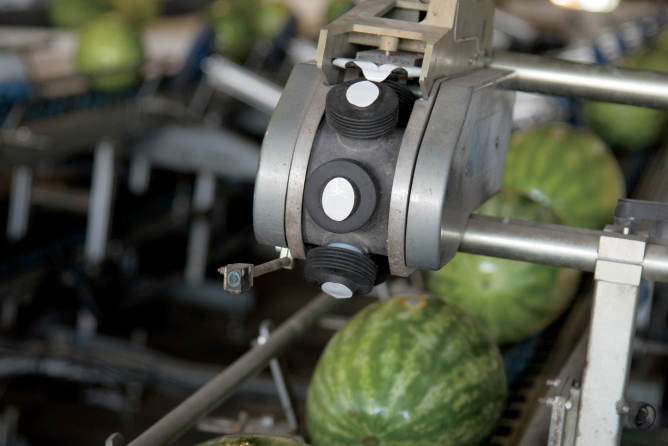
The harvested melons head to the packing shed. The melons enter wash and grading lines, where employees hand-sort for both quality and grade. Machines apply the PLU (or “price look-up”) sticker familiar to grocery shoppers.
“We pick today, pack today, cool tonight and ship in the morning,” Jackson says. “It’s roughly 48 hours from field to distribution center.”
Now that’s some fresh, refreshing fruit.
How to Choose a Watermelon
According to melon grower Rodney Jackson, here’s how you should choose a watermelon:
1. Pat the watermelon and make sure it has a ring to it. You don’t want a melon that sounds like a football without enough air in it.
2. Pick a watermelon with defined stripes and a bit of texture to the skin, rather than one that feels slick and smooth. The contrast in stripe colors and textured skin both indicate maturity.
– Joanie Stiers



This article is very useful. Thanks for the precious information
such interesting information. Glad we have a program that helps migrant workers help us to get products out into the marketplace.
[…] See also L’Express: “The Logs Analyzer Assists Our Migrations And Confirms Our Decisions”Jackson Farming Company. Melon harvesting, cleaning, grading and packing. Sampson County NC. Watermelons. Creator: Michael Cline Photography. […]